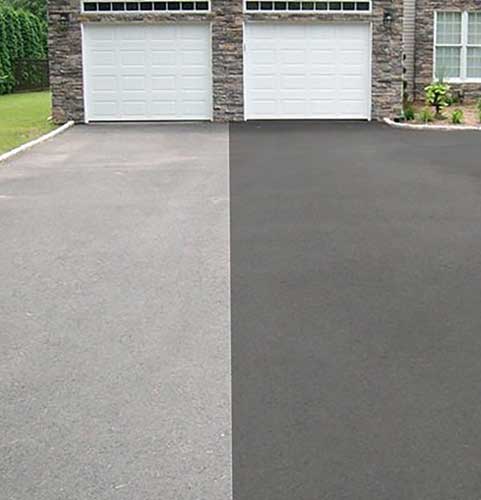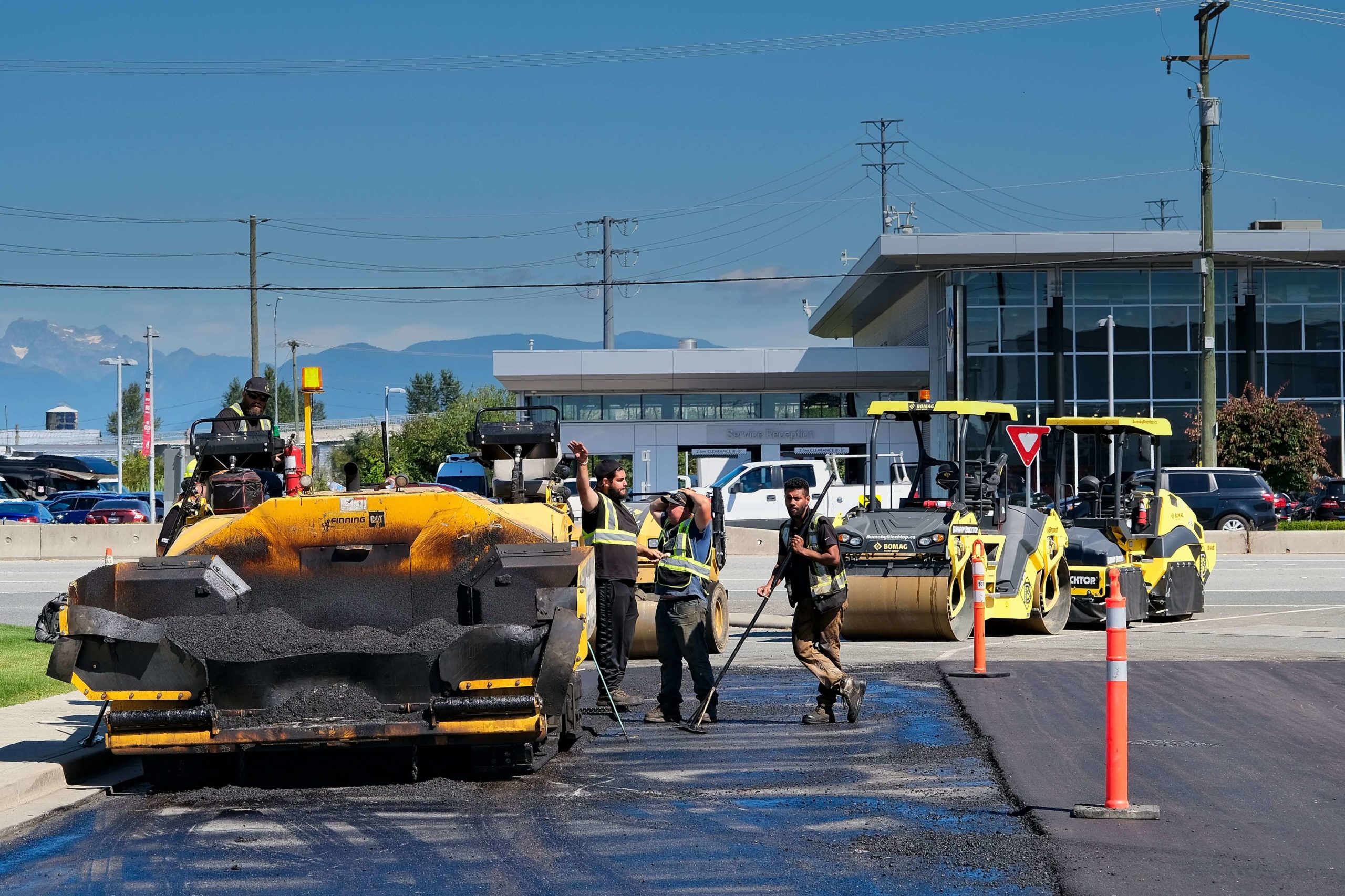Understanding Tilted Parking: How Asphalt Sealing Improves Industrial Great Deals
Understanding Tilted Parking: How Asphalt Sealing Improves Industrial Great Deals
Blog Article
Warm Mix Asphalt: A Lasting Option for Sidewalk
Hot Mix Asphalt (HMA) has actually emerged as a leading lasting selection for pavement services, supplying a myriad of cutting-edge innovations and ecological advantages. Its capacity to reuse materials and reduce energy consumption offers a compelling case for its adoption in road construction tasks. Furthermore, the long-lasting efficiency and sturdiness of HMA make it a recommended choice for infrastructure advancement. As the demand for environment-friendly construction methods expands, discovering the subtleties of HMA's sustainability can give beneficial understandings into the future of sidewalk remedies.
Environmental Advantages of Warm Mix Asphalt

In Addition, Hot Mix Asphalt aids to minimize metropolitan warm island impacts. Its dark shade absorbs sunlight, minimizing the quantity of warmth mirrored back into the environment contrasted to lighter-colored pavements. This can reduce ambient temperatures in urban areas, lowering the need for cooling and inevitably decreasing energy usage.
Furthermore, Hot Mix Asphalt adds to enhanced stormwater monitoring. Its porous nature enables water to infiltrate the sidewalk and charge groundwater supplies, minimizing overflow and the danger of flooding. These ecological advantages make Hot Mix Asphalt a lasting selection for leading freeways and roads.
Power Efficiency in HMA Manufacturing
Is power performance a vital variable in the manufacturing of Warm Mix Asphalt (HMA)? Energy plays a substantial role in the production of HMA, affecting both price and ecological sustainability. One key element of energy efficiency in HMA production is the use of warm mix asphalt (WMA) technologies.
Moreover, improvements in plant technologies have actually led to even more energy-efficient HMA production procedures. By optimizing energy usage in HMA production, the sector can minimize its carbon impact while preserving high-grade sidewalk products.
Recyclability of Warm Mix Asphalt
The recyclability of Hot Mix Asphalt (HMA) is a critical aspect of its sustainability and long-lasting environmental influence. HMA is among the most recycled products in the United States, with over 100 million loads of redeemed asphalt sidewalk (RAP) being recycled annually in brand-new pavement construction. Reusing HMA uses a number of environmental benefits, such as reducing the demand for virgin materials, decreasing power intake during production, and reducing the amount of waste sent out to land fills.
The process of recycling HMA entails grating the existing pavement, squashing it right into smaller pieces, and blending it with brand-new accumulation and asphalt binder to create a recycled mix. This recycled mix can typically execute along with or also better than standard HMA, while requiring fewer raw click for more materials and creating lower greenhouse gas emissions. By integrating RAP right into brand-new sidewalk tasks, roadway firms can save natural resources, decrease expenses, and lessen the environmental footprint of road building and construction and maintenance activities. In general, the recyclability of HMA plays a significant function in promoting lasting techniques within the pavement market.

Long-Term Performance of HMA
Asphalt sidewalks show durability and resilience over an extended duration, mirroring the long-lasting performance of Hot Mix Asphalt (HMA) The longevity of HMA can be credited to its capacity to withstand heavy website traffic loads, rough weather conditions, and the effects of aging. Studies have shown that well-designed and effectively created HMA pavements can last for twenty years or more with regular maintenance. The trick to maximizing the long-lasting efficiency of HMA depends on using top quality products, complying with finest practices in building, and executing effective upkeep strategies. Appropriate water drainage, regular assessments, and timely fixings are crucial for protecting the architectural honesty of HMA pavements with time. In addition, innovations in HMA technology, such as using polymer-modified binders and cozy mix asphalt, have further enhanced the sturdiness and long life of HMA sidewalks. By prioritizing quality construction and maintenance techniques, HMA continues to confirm itself as a affordable and lasting solution for durable sidewalk infrastructure.

HMA: Sturdiness and Sustainability
Showing both sturdiness and sustainability, Warm Mix Asphalt (HMA) has become a foundation in the building of resilient sidewalk facilities - angled parking. HMA's durability stems from its capacity to endure hefty lots, rough climate condition, and high website traffic quantities, making it a reliable selection for roads, highways, and flight terminal runways. The make-up of HMA, which usually includes accumulations, binder, and filler, plays a crucial duty in boosting its long life and resistance to tear and wear
Furthermore, Check This Out HMA's sustainability hinges on its recyclability and energy-efficient manufacturing procedure. The ability to recycle redeemed asphalt pavement (RAP) in new HMA combinations minimizes the need for virgin materials and reduces the environmental impact of sidewalk construction and maintenance. Furthermore, the energy effectiveness of producing HMA hinges on its reduced mixing temperatures compared to other pavement materials, resulting in lowered energy consumption and greenhouse gas discharges.
Final Thought
To conclude, hot mix asphalt (HMA) uses a lasting solution for pavement with its eco-friendly attributes. HMA's recyclability, energy effectiveness in production, and lasting toughness make it an environment-friendly selection for road building and construction. By preserving natural sources, minimizing waste, and reducing greenhouse gas discharges, HMA plays a crucial role in promoting sustainability in framework growth. Its capability to alleviate metropolitan warmth island impacts better highlights its importance in developing resilient and eco aware sidewalk systems.
HMA is one of the most recycled materials in the United States, with over 100 million heaps of recovered asphalt pavement (RAP) being recycled every year in new sidewalk building and construction.The procedure of reusing HMA includes grating the existing sidewalk, squashing it right into smaller pieces, and blending it with brand-new accumulation and asphalt binder to create a recycled mix.Asphalt sidewalks show resilience and durability over a prolonged period, mirroring the long-lasting performance of Warm Mix Asphalt (HMA) Additionally, improvements in HMA technology, such as the usage of polymer-modified binders and warm mix asphalt, have better boosted the resilience and long life of HMA sidewalks. The ability to recycle redeemed asphalt sidewalk (RAP) in new HMA blends decreases the need for virgin materials and reduces the check these guys out environmental influence of pavement construction and upkeep.
Report this page